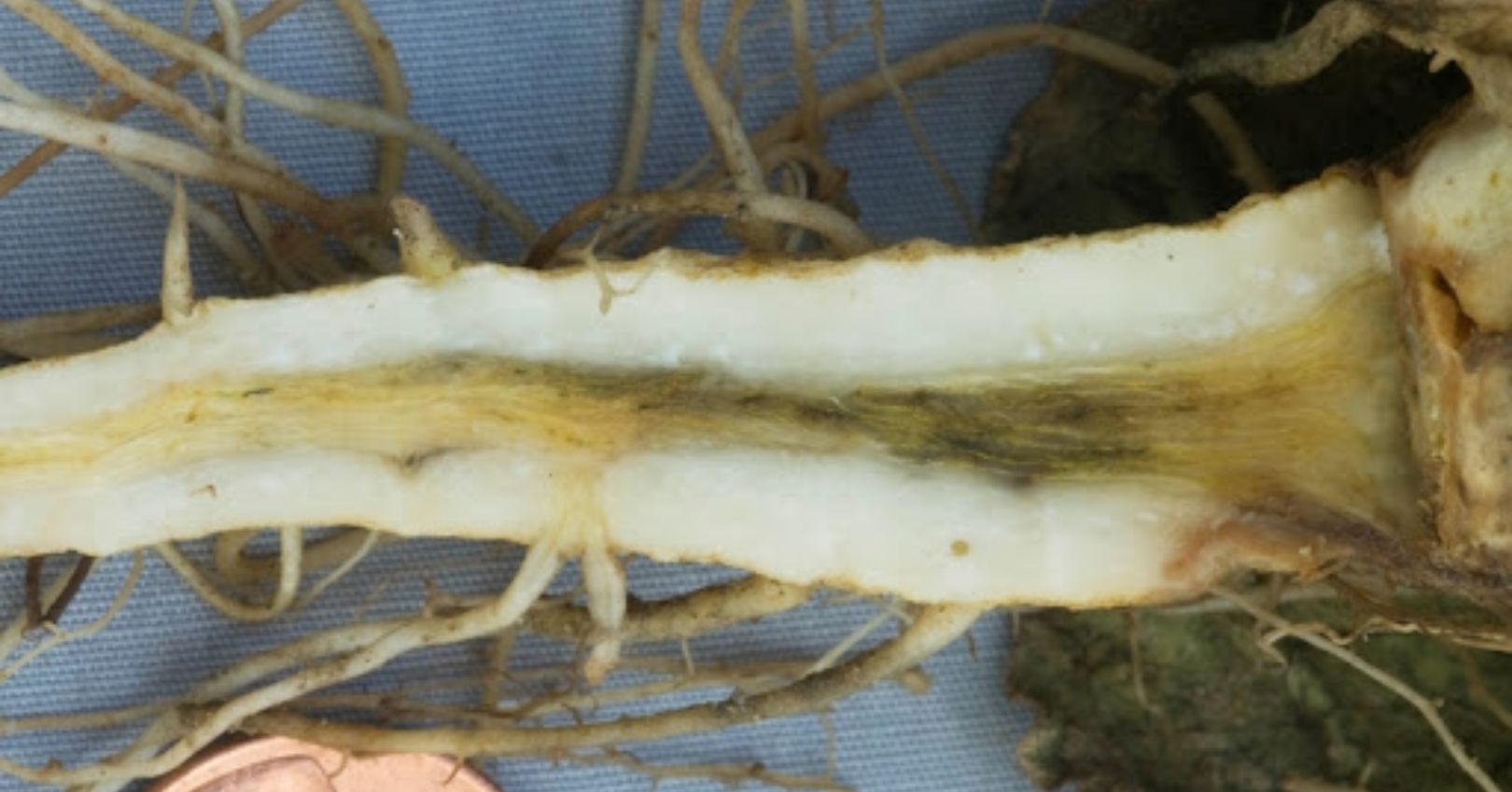Verticillium Wilt


Casual Agent
Verticillium wilt is caused by Verticillium dahliae which affects both lettuce and spinach.
Symptoms
Foliar symptoms include necrotic lesion that can be angular. In head lettuce, outer leaves die by remaining folded on the head. A discoloration of the vascular tissue can be seen by cutting through the main stem. As the lettuce matures the fungus colonizes the center of the head and kills the plant.
Disease Cycle
Verticillium dahliae is a soilborne pathogen that infects many plant species including several vegetables and alfalfa. Infection occurs through the roots and grows through the vascular tissue up into the plant. The first symptoms usually occur 6-8 weeks after infection. Wilting is caused in part by the fungal growth clogging the phloem and xylem and by the plant trying to stop the movement of the fungus by blocking the colonized vascular tissue. Survival structures of this disease (microsclerotia) can survive many years in the soil.
Management
Management of Verticillium is difficult. The best option is to avoid its introduction into fields by only using certified disease-free seed and cleaning equipment after use in other fields. Crop rotation is ineffective due to the large host range of the pathogen. No chemical treatment options are available for this disease.
- Use disease-free seed to avoid introduction into fields. Some lettuce varieties have resistance to Verticillium race 1 but not to race
- Use disease- free seeds for other rotating vegetables as Verticillium may colonize seeds of other vegetables.

